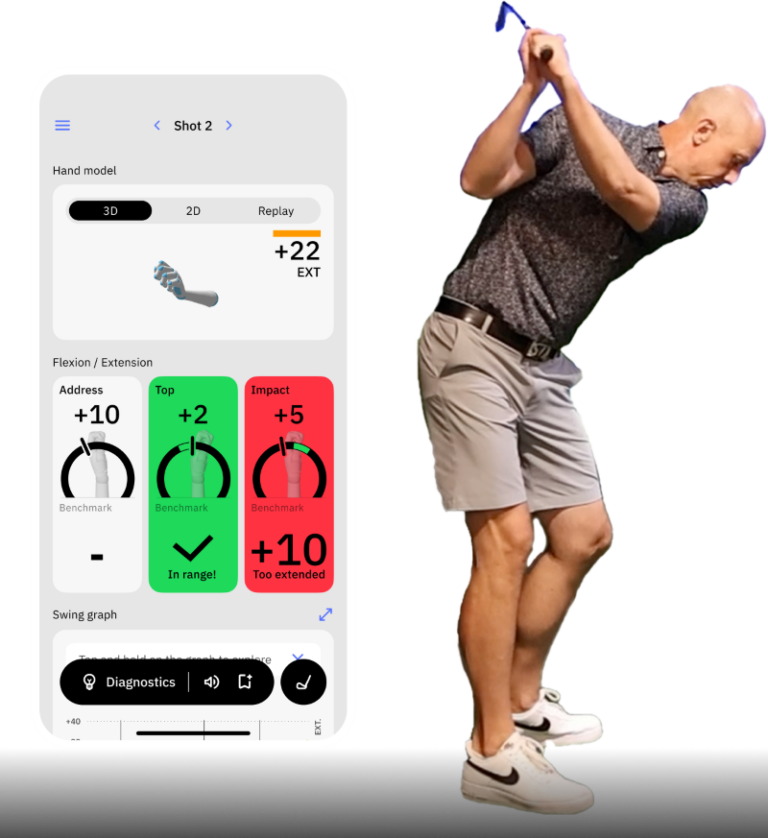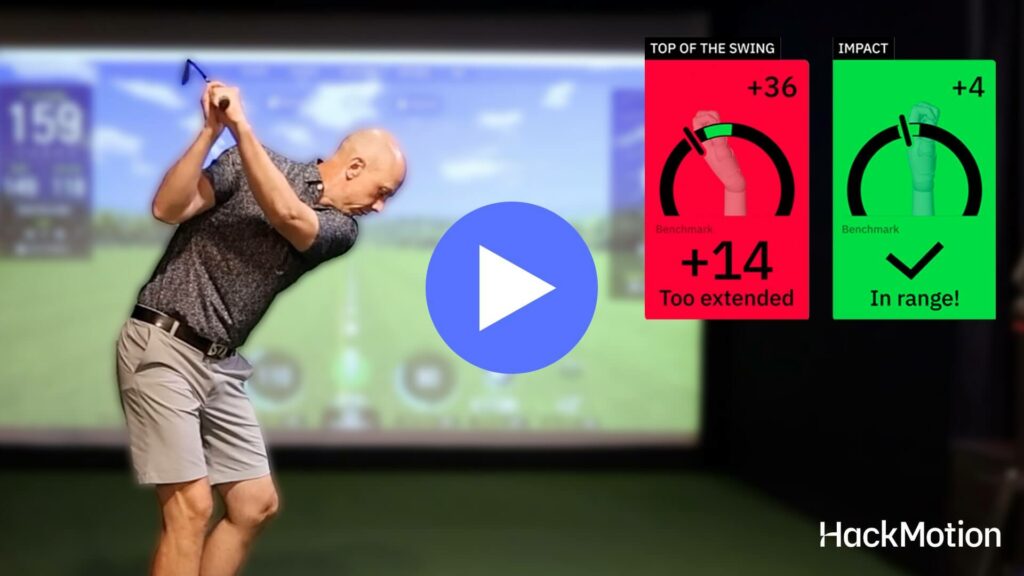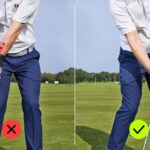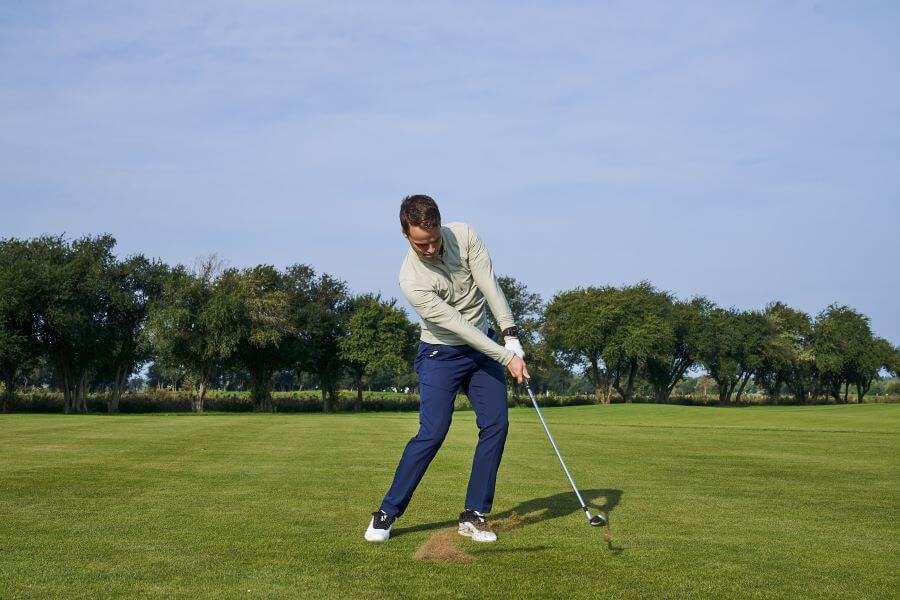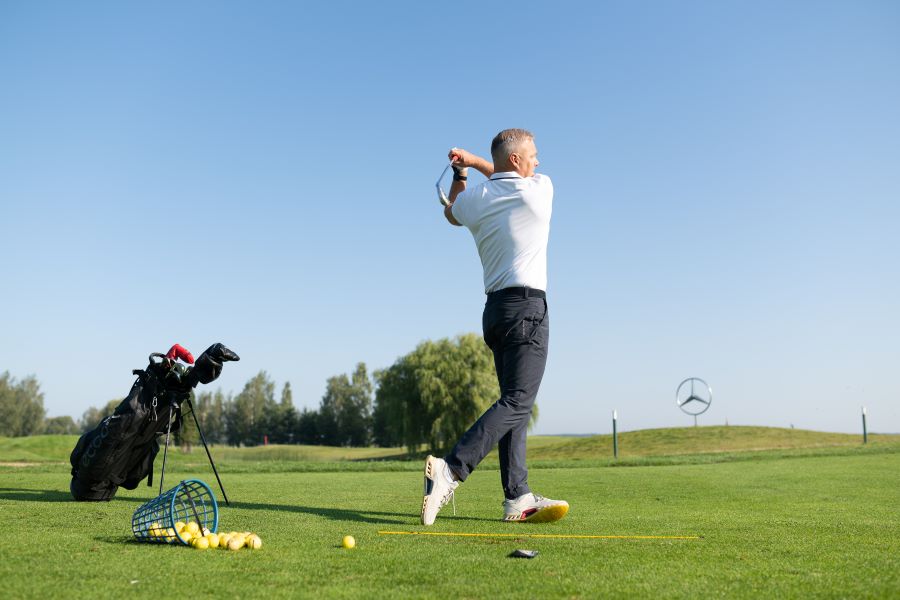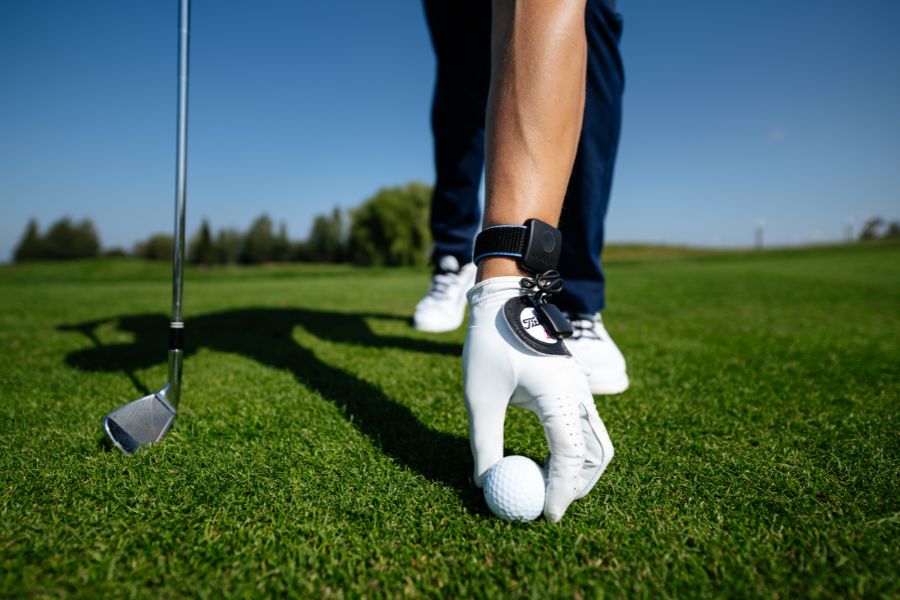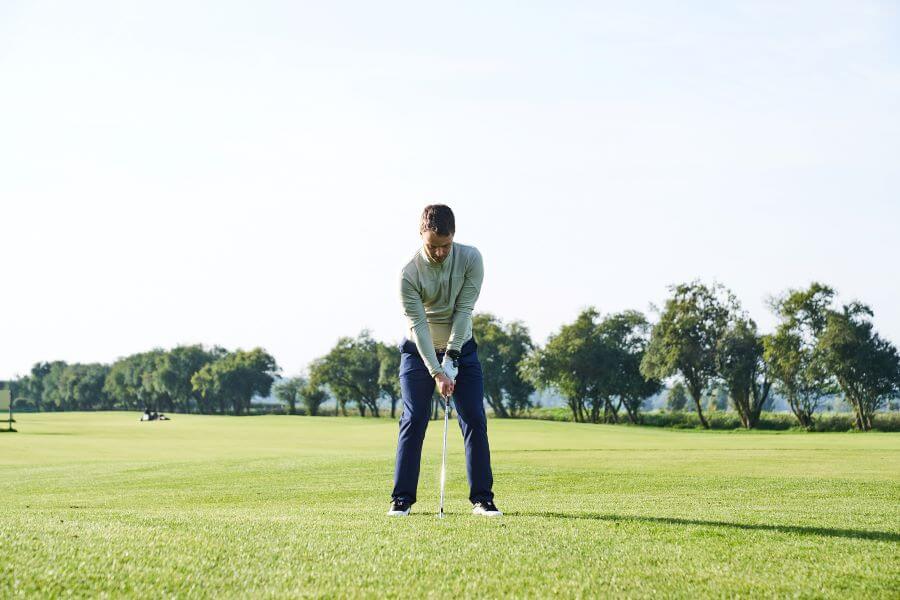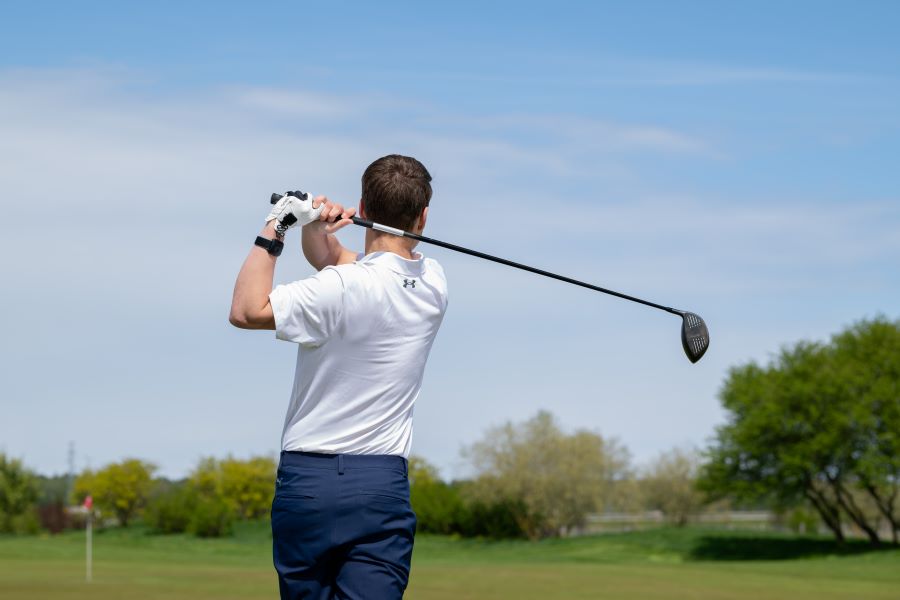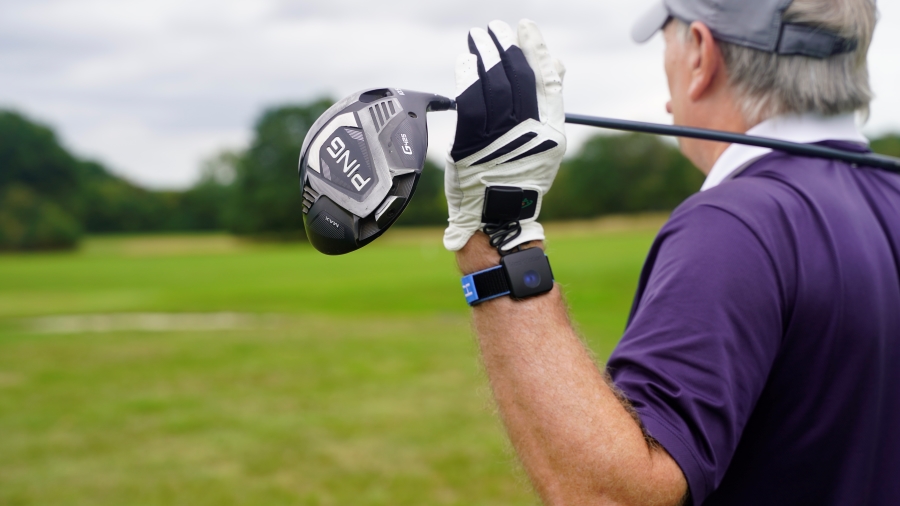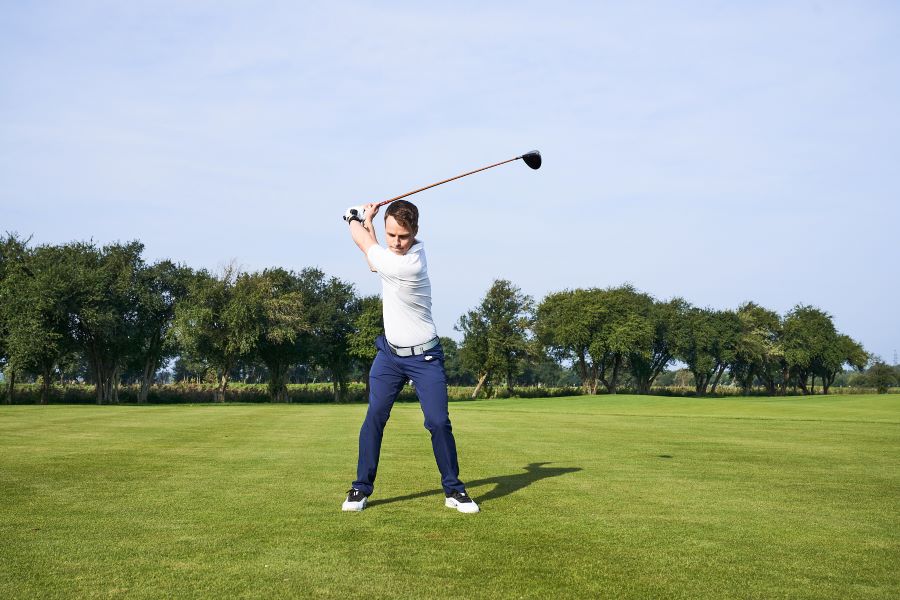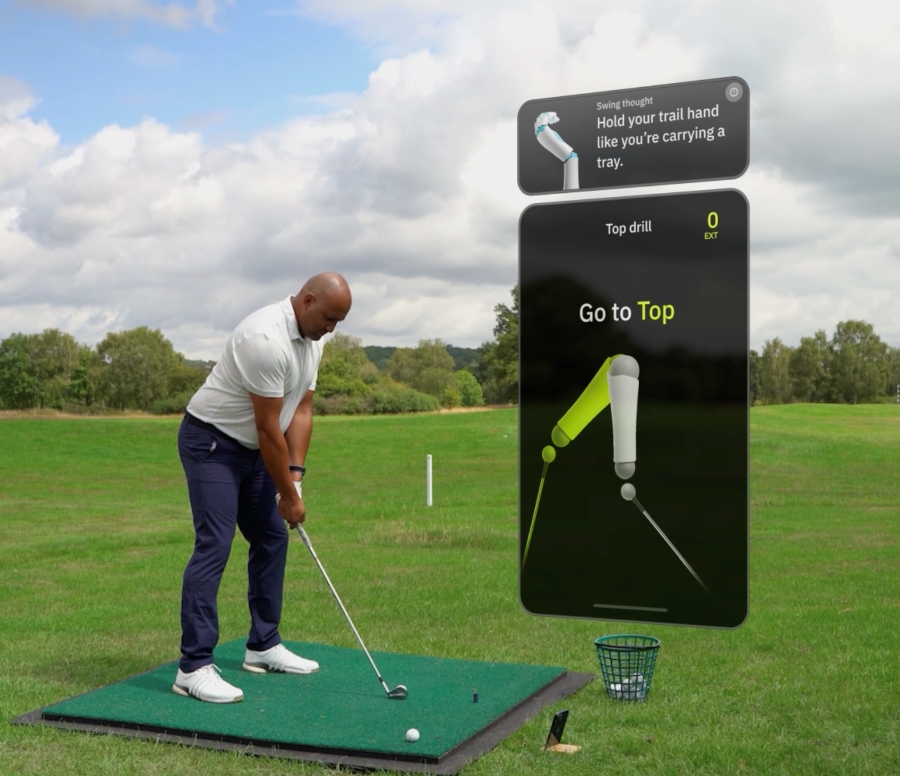Proper Impact Position in Golf: 4 Critical Elements to Check & Drills for Solid Contact
Impact position in golf is the most important part of the game. If the impact is correct, you’ll hit the shot you want to hit.
The problem for most amateurs is that they aren’t exactly sure what a good impact position looks like, or what checkpoints matter most.
In this guide, we’ll walk through the four critical areas of a proper impact position, explain how both your lead and trail wrist contribute, and then finish with practical drills you can use to build these positions into your swing.
With HackMotion, you’ll be able to measure both wrists and finally take the guesswork out of improving your ball striking.
Proper Impact Position in Golf (Key Takeaways)
If you don’t have time to read through these checkpoints right now, here are the most important things to keep in mind.
- Four key areas at impact: clubface angle, wrist angles, body rotation, and shaft lean.
- Lead wrist should be flat to slightly flexed; the trail wrist should be more extended at impact than at setup.
- HackMotion makes it easy to measure both wrists and ensure the clubface stays square.
- Proper shaft lean requires lead-wrist flexion, not extension, otherwise the face opens.
Contents
4 Checkpoints for a Solid Impact Position in Golf
There are countless swing thoughts and training cues in golf, but when it comes to hitting the ball solidly, everything boils down to a few key checkpoints at impact.
By focusing on these four areas, clubface angle, wrist positions, body rotation, and shaft lean, you can quickly see whether your swing is setting you up for success.
Each checkpoint builds on the others, and with the help of HackMotion, you can actually measure these positions instead of just guessing.
Checkpoint 1: Clubface Angle
Your clubface angle at impact is the biggest determinant of ball flight. Ideally, it should be square to the target line, though some players succeed with slightly closed faces that promote a draw.
Where most amateurs struggle is with an open face—this not only makes it nearly impossible to hit straight shots but also forces compensations with the hands that lead to weak or inconsistent strikes.
There are a few ways to check this. A launch monitor can show you precise face angle numbers. Simpler options include impact tape or foot spray on the clubface to confirm strike location and whether it relates to your face position.
The important thing to understand is that the clubface is largely controlled by the wrists. A square setup and a flat lead wrist at impact go hand in hand. That leads us to the next checkpoint.
Checkpoint 2: Wrist Angles
The wrists are the engine of impact.
What happens with your lead and trail wrist determines where the clubface points and whether the shaft leans forward into the ball.
With HackMotion, you can see exactly what’s happening in real time:
Lead wrist: At impact, the best players have moved from extension at address into a flat or slightly flexed (bowed) position. Too much extension leaves the face open and the strike weak.
Trail wrist: At the same time, pros maintain more extension in the trail wrist at impact than they had at setup. This “backward bend” keeps the handle leading and prevents the early release that causes fat and thin shots.
This combination, lead wrist flexion and trail wrist extension, is what allows you to compress the ball, square the face, and add forward shaft lean without flipping.
HackMotion’s database of over one million swings confirms this pattern again and again.
Checkpoint 3: Body Rotation
Once the wrists and clubface are in order, the body can do its job.
At impact, the hips and chest should already be rotating open to the target. This keeps the swing moving through the ball, prevents the dreaded wrist flip, and allows you to use your strength efficiently.
Many amateurs instinctively slow the body down to “help” square the face, but this wastes energy and robs shots of both distance and consistency.
By squaring the clubface with the wrists first, you give yourself the freedom to rotate the hips aggressively and let the ball get in the way.
A simple alignment stick tucked into your belt can make this more visible. If the stick rotates through the ball with your hips, you’re on the right track. If it stalls and points at the ball, you’re likely compensating somewhere else in the swing.
Checkpoint 4: Shaft Lean
Almost every tour player shows some degree of forward shaft lean at impact. The handle leads the clubhead into the ball, producing a descending strike and compressed contact.
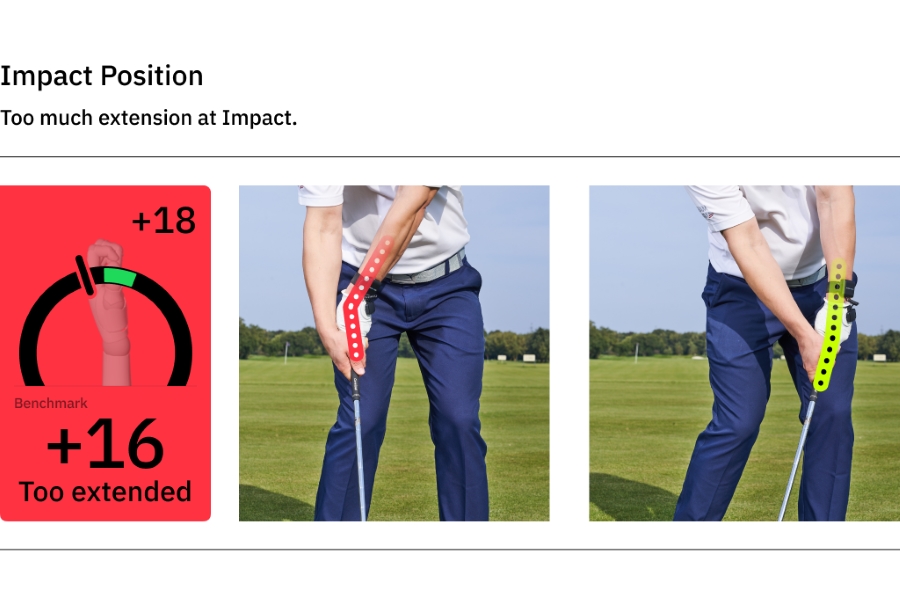
For amateurs, the challenge isn’t knowing that shaft lean matters—it’s understanding how to create it without breaking other parts of the swing.
The common mistake:
- Forcing the hands forward while the lead wrist is extended (cupped).
- This opens the face dramatically, leaving you with weak shots to the right.
- To compensate, the body stalls and the wrists flip late, ruining strike and direction.
The correct move:
- Combine forward handle position with a flat or slightly flexed lead wrist.
- Maintain trail wrist extension longer than at setup to support the lean.
- This squares the face, compresses the ball, and produces a strong, penetrating flight.
HackMotion data confirms it: the best players arrive at impact with more lead wrist flexion and more trail wrist extension than they had at address. Practicing this combination helps you avoid the flip and hit lower, stronger shots that hold their line.
Drills to Improve Impact Position in Golf
You’ve probably seen impact bags used for practice, but there are more effective ways to train the wrists and body for better impact.
Here are three drills that directly target the positions you need:
Motorcycle Drill (Lead Wrist Control)
This drill helps you feel what it’s like to move the lead wrist into flexion and square the face.
Motorcycle Drill – Master Wrist Flexion in the Downswing
Focus on continuously adding flexion until the club reaches parallel, then smoothly complete your swing.
HackMotion Motorcycle Drill – Step by Step:
- At setup, hinge the lead wrist down as if revving a motorcycle.
- Hold that flexed sensation as you start the downswing.
- At impact, check HackMotion: extension should be less than it was at address.
Hit Hard, Stop Quick Drill (Trail Wrist Focus)
This drill teaches you to retain trail wrist extension through the strike instead of flipping.
Hit Hard, Stop Quick Drill (Trail Wrist Focus) – Step by Step:
- Take a mid-iron and set up normally.
- Swing hard into the ball but stop the club almost immediately after impact.
- The only way to do this is to keep the trail wrist bent back, with the handle leading.
- Build speed gradually while monitoring with HackMotion.
Swish & Recoil Drill (Sequencing and Release)
This one trains you to deliver speed to the ball at the right moment.
Swish & Recoil Drill (Sequencing and Release) – Step by Step:
- Flip a club upside down or use an alignment stick.
- Make swings trying to produce the loudest “swish” at the bottom of the arc.
- Add the “hit hard, stop quick, then recoil” version: strike, stop quickly, then pull the club back fast.
- This builds the proper bracing and release pattern while teaching the body to absorb swing forces instead of the wrists collapsing.
FAQs
Where should the chest point at impact?
Slightly ahead of the ball toward the target. This shows weight and rotation are shifting forward correctly.
How do you control the clubface at impact?
With the wrists. A flat or flexed lead wrist squares the face, while extension opens it.
What should the hands do at impact?
With irons, the hands should be ahead of the ball, promoting compression. Even with the driver, they should never lag behind the clubhead.
How do you become more open at impact?
Rotate hips and shoulders through the shot. Just make sure the face is already square so you don’t stall.
How can you hit the center of the clubface more often?
Keep a steady head, control wrist angles, and practice with impact tape to verify progress.
Final Thoughts
The impact position is where your swing either succeeds or fails. By focusing on the four checkpoints, clubface angle, wrist angles, body rotation, and shaft lean, you’ll know exactly what to look for.
HackMotion makes this measurable. Wear the sensor on your lead or trail wrist to confirm that you’re achieving the patterns of the best ball strikers: a flexed lead wrist, an extended trail wrist, and shaft lean delivered with a square face.
Once you know the numbers, use the drills to build feels you can trust on the course. Get impact right, and every other part of your swing becomes easier.
